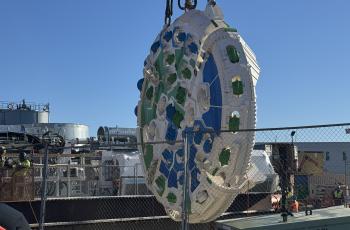Nitrogen natural element found in the earth and in our atmosphere. It is a vital component of life for many organisms, but too much nitrogen in our waterways can be harmful. Excess nitrogen can cause algal blooms which deplete the oxygen that fish and other aquatic life need to survive.
For many years, DC Water has been a leader in voluntarily reducing nitrogen and phosphorus discharge from the wastewater treatment process. We have an ongoing and aggressive program to reduce nitrogen levels discharged from our Blue Plains Advanced Wastewater Treatment Plant into the Potomac River, a tributary of the Chesapeake Bay.
DC Water operates under an NPDES permit issued by the EPA. This permit sets limits for the amount of nitrogen and phosphorus that can be discharged from the treatment plant.
DC Water began operating a full-plant Biological Nitrogen Removal (BNR) system in 2001 to maintain compliance with our EPA permit. At that time the treated wastewater that was discharged, or effluent, could not contain more than 7.5 mg/l total nitrogen on an annual average basis. In 2015, DC Water brought our Enhanced Nitrogen Removal Facilities (ENRF) online to meet a new effluent limit of 4.0 mg/L of total nitrogen on an annual basis. With this advanced system, DC Water has not only met, but exceeded, our required reduction of nitrogen. Since the implementation of our nitrogen removal facilities, DC water has prevented over 144 million pounds of nitrogen from entering the Potomac River.
To learn more about nitrogen removal at Blue Plains, please review our Blue Plains Advanced Wastewater Treatment Plant brochure.


